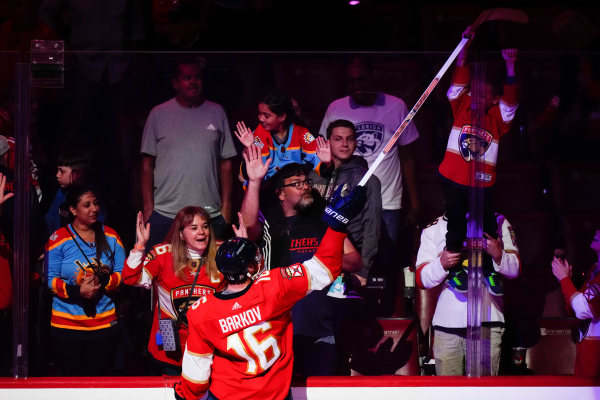
It's Sunny Ways for Non-Traditional Markets in the NHL Conference Finals
Although some hockey fans worry about having four non-traditional markets in the NHL's conference finals, Adam Proteau explains why it's great for the game.

In its inception period of 1917, and for five decades afterward, the NHL was a cold-climate league.
It took until the 1967-68 season for hockey’s top league to expand into a warm-weather market, with the Los Angeles Kings and California Golden Seals joining the NHL as less-traditional hockey markets. But since that time, the NHL has deepened its imprint on the professional sports scene in the U.S. South and in cities where hockey isn’t engrained in its culture.
That process has moved along steadily. As a result, this season’s final four Stanley Cup championship-eligible teams are all in markets where the game didn’t originate. Dallas, Carolina, Vegas and Florida are all teams that play in areas where there hasn’t been the bedrock success enjoyed by Original Six teams, for instance.
That’s fine. No, scratch that – that’s better than fine. That’s an indication that the NHL’s blueprint for success in the southern and western U.S. is panning out as hoped.
In Dallas, the Stars relocated to town from Minnesota in 1993-94, and initially (as per hockeydb.com), the team averaged more than 16,000 fans per game before reaching a peak of more than 18,000 fans per game. That’s approximately where they were this season, averaging 18,371 people in the building.
However, just as importantly, there has been grassroots growth at the amateur level in Texas – via the Stars’ Little Rookies programs and the NHL’s “Learn To Play” program – that is creating promising prospects for the future and setting down deep roots in the community. It’s to the point there’s now an expectation the NHL could eventually set up shop for a second franchise in Texas, in Houston. That feels like a fait accompli now, and in many ways, that’s a credit to the league.
Meanwhile, in Las Vegas, the Golden Knights have quickly come to be one of the city’s bigger attractions in six years of operation. They’ve hit the 18,000-tickets average in each of their first half-dozen seasons, no doubt aided by the NHL’s more expansion-friendly talent acquisition rules. The Golden Knights have been consistently competitive, and Vegas has reacted with glee, embracing the team unreservedly.
In the Eastern Conference final this year, we also have two teams in non-traditional hockey markets – one via relocation, and the other, via expansion.
The Hurricanes (nee Whalers) moved from Hartford to Carolina in 1997. At first, attendance was a challenge, with the Canes averaging between approximately 8,100 fans and 13,300 fans in their first four years of resettlement.
Seat sales spiked to 17,300 fans in 2006-07 – the season after the team won its first Cup in franchise history – and although there have been dips and rises in attendance since then, their rise in competitiveness has raised their attendance record to an average of 19,526 fans per game this season. Hockey is alive and thriving once again in North Carolina, and the days ahead look bright for them as both an entertainment product and as a building ground for young people playing on amateur rinks in the area.
Finally, the Florida Panthers – one of the NHL’s weakest teams for much of its existence – is also improving on its attendance.
At times, with the organization struggling on the ice, average game attendance sunk to a franchise-worst of 11,271 in 2014-15. But as the team improved in the past couple of years, attendance has surged to 16,682 – its best average in a decade. The Panthers’ improbable playoff performance this spring will almost assuredly lead to a similarly high total next season, and there will be more children and young adults looking to participate in some form of amateur hockey in the years ahead. That will be a success story in and of itself.
All-in-all, things look very good indeed for all four American markets still invested in the Cup tournament. Hockey hardliners can sneer at the relative infancy of the Dallas/Vegas/Carolina/Florida NHL markets all they want, but the truth on the ground is that the league’s movement into non-traditional markets has succeeded as hoped for.
We should not necessarily expect to see American southern and western teams always succeed down the line, but we should no longer be surprised by that success. In the modern-day environment of the professional side of the sport, with the salary cap creating competitive parity, the NHL has set teams up all its teams to excel at one point or another.